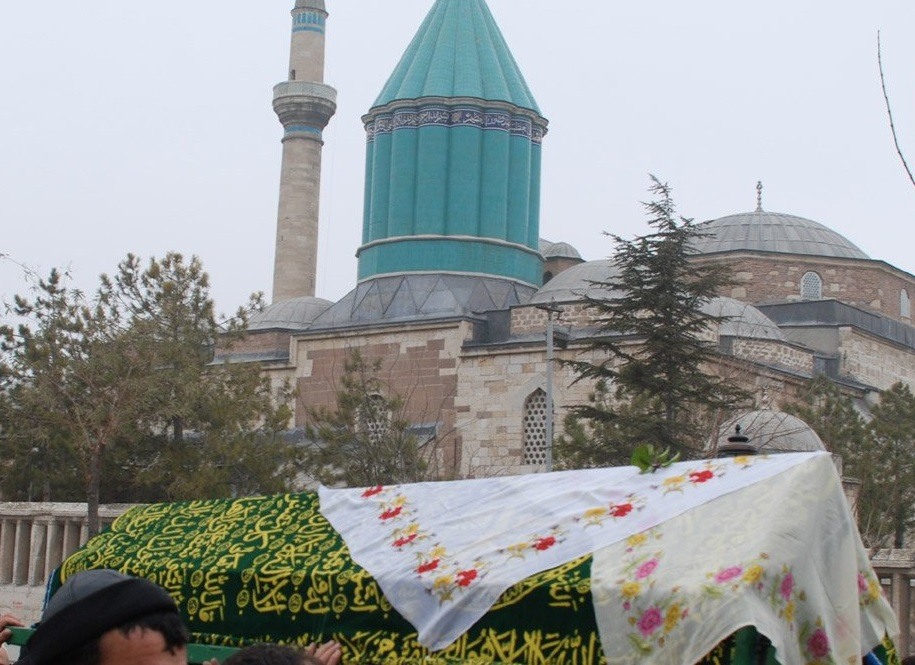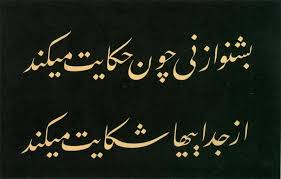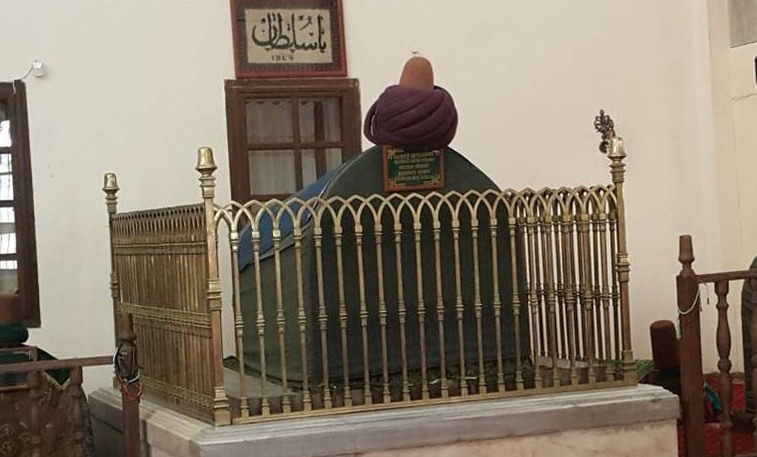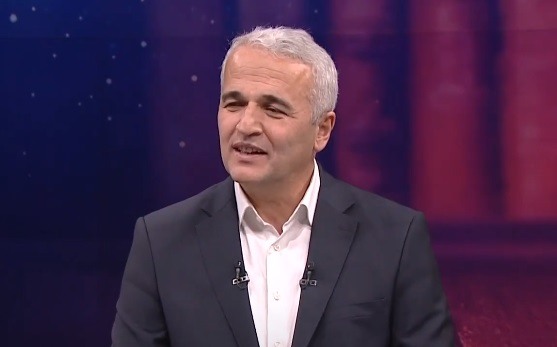ARİF AY’IN ŞİİRLERİNDE MEVLEVİLİK UNSURLARI VE MEVLANA
ARİF AY’IN ŞİİRLERİNDE MEVLEVİLİK UNSURLARI VE MEVLANA
ELEMENTS OF THE MAWLAWI ORDER AND RUMI (MAWLANA) IN ARIF AY’S POEMS
Beyhan KANTER1
ÖZ
Mevleviliğin inşa ettiği ilmî, kültürel ve sanatsal hafıza, geçmişin değerler sisteminin, mistik ve metafizik tecrübelerle oluşturulan kurucu unsurlarının ve Mevleviliğe ait öğretilerin bugüne taşınmasında önemli bir yere sahiptir. Mevlana’nın; aşkın yüceliğini, insanın küçük bir kâinat olduğunu ve insanın içindeki güzelliğin keşfedilmesinin gerektiğini yansıtan kuşatıcı yaklaşımları ve sadece kendi yaşadığı devre değil bugüne de hitap eden fikirleri, Mevlevi sanatkârların eserlerinde yoğun bir şekilde etkisini göstermektedir. Bununla birlikte Mesnevi’nin sembolik dili, esrarını, ilhamını, hikmetini ve idrakini Mesnevi’den alan sanat eserlerinde de estetik, tematik veya didaktik değerler olarak yer edinir. Mevleviliğin; dünya hayatı, uhreviliğin algılanışı ve sanatla kurduğu tasavvufî ilişki, pek çok şairin eserinde metafor ve imge olarak zengin çağrışım alanları ile yer edinir. Bu şairlerden biri de günümüz Türk şiirinin güçlü isimlerinden olan Arif Ay’dır. Şiirlerinde imgelere ve çağrışımlara dayalı yoğun ve metaforik bir anlatımı benimseyen Arif Ay, tasavvufî geleneğin ıstılahlarını, sembol ve mazmunlarını, mistik ve metafizik duyuş tarzını -özellikle Mevleviliğe dayalı unsurları- dış dünyanın ve çağın anlamlandırılması ve sorgulanması bağlamında işler. Bu makalede, çağdaş Türk şairlerinden Arif Ay’ın şiirlerinde Mevlana ve Mevleviliğe dair özellikler, metinlerarası unsurlar ve şairin poetik tutumu çerçevesinde irdelenecektir. Arif Ay’ın şiirlerinde Mevlana ve Mevleviliğin hangi özelliklerinin yer aldığı ve modern hayatla ne şekilde irtibatlandırıldığı tespit ve tahlil edilmeye çalışılacaktır.
Anahtar Kelimeler: Arif Ay, Mevlana, Mevlevilik, tasavvuf, Şeyh Galip
ABSTRACT
The scholarly, cultural and artistic memory formed by the Mawlawi order has a crucial role in transferring the values system of the past, the founding elements arising from mystical and metaphysical experiences, and the teachings of the Mawlawi order to date. Rumi’s comprehensive approaches reflecting the sublimity of love, the fact that humanity is a microcosmos and the necessity of unveiling the inner beauty of humankind, and his philosophy that addresses not only his own period but also the present, are extremely influential in the works of the Mawlawi order artists. Additionally, the symbolic language of Mathnawi manifests itself as the aesthetic, thematic or didactic values in the works of art which take their mystery, inspiration, wisdom and understanding from Mathnawi. The Sufistic relationship between the Mawlawi order and the temporary life, the perception of otherworldliness and art occur metaphors and images extending to rich association fields in the works of many poets. Arif Ay, one of the prominent representatives of contemporary Turkish poetry, is among them. Using a multi-layered and metaphorical poetic language based on images and associations in his poems, Arif Ay deals with the terms, symbols, metaphors, and mystical and metaphysical sensitivity of Sufistic tradition -particularly ones based on the Mawlawi order- in the context of explaining and examining the external world and the era. In this article, the characteristics of Rumi and the Mawlawi order in the poems of Arif Ay, one of the contemporary Turkish poets, will be examined within the scope of intertextual elements and of poetics of the poet. In this work, the attempt will be to determine and analyse which features of Rumi and the Mawlawi order exist in Arif Ay’s poems and how these are attached to modern life.
Keywords: Arif Ay, Rumi (Mawlana), Mawlawiyah, Sheikh Ghalib
Extended Abstract
The scholarly, cultural and artistic memory formed by the Mawlawi order has a crucial role in transferring the values system of the past, the founding elements arising from mystical and metaphysical experiences, and the teachings of the Mawlawi order to date. Rumi’s comprehensive approaches reflecting the sublimity of love, the fact that humanity is a microcosmos and the necessity of unveiling the inner beauty of humankind, and his philosophy that addresses not only his own period but also the present, are extremely influential in the works of the Mawlawi order artists. Additionally, the symbolic language of Mathnawi manifests itself as the aesthetic, thematic or didactic values in the works of art which take their mystery, inspiration, wisdom and understanding from Mathnawi. The Sufistic relationship between the Mawlawi order and the temporary life, the perception of otherworldliness and occur as metaphors and images extending to rich association fields in the works of many poets. Arif Ay, one of the prominent representative of contemporary Turkish poetry, is among them. Using a multi-layered and metaphorical poetic language based on images and associations in his poems, he deals with the terms, symbols, metaphors and mystical and metaphysical sensitivity of Sufistic tradition -particularly ones based on the Mawlawi order- in the context of explaining and examining the external world and the era. Arif Ay bases his work on religious and sufistic elements in his poems while criticising the impositions and exploitation systems of modern life which capture the individual and make him/her a prisoner of objects and ambitions. However, these elements are handled not with shallow didacticism, but with an aesthetic sensitivity based on images and associations. The most outstanding and prevailing Sufistic references in Arif Ay’s poems are related to Rumi and the Mawlawi order. Rumi and the Mawlawi order in Arif Ay’s poems come about both in the context of questioning the directing of the individual in the modern age and as a way of perceiving life, humanity, and existence. Therefore, the poet privileges both the Rumi period and the periods when the Mawlawi order was in effect, not with a nostalgia or romanticism, but as a shelter against the crisis brought forth by the impositions of the age and the loss of human qualities. The poet, who identifies cities such as Damascus (Şam) and Konya, which contributed to the development of Islamic civilization in scholarly and cultural respects, with Rumi and the Mawlawi order, criticises the secular fibre of modern life and its corruptive effect on the individual through these cities. In this context, periods and places in which the spheres of influence of the Mawlawi order have extended are compared with modern, secular life. Consequently, Arif Ay compares the current fate of Damascus with its past in his poems, in which he mentions the role of Islamic cities in the building of civilization and carries Rumi and Şems to his verses in the context of the cultural and scholarly memory of Damascus. The current situation of Damascus, an ancient civilization city, where the mystical experiences and friendships of Rumi and Şems-i Tebrizî are still preserved, constitutes the background of Arif Ay’s poem titled “Şam Konuşuyor (Damascus Expresses Itself)” in the context of losing the cultural codes preserved by this city. Moreover, the fact that Mawlawi poet Sheikh Ghalib’s favourite mazmuns have a wide coverage in modern Turkish poetry sets out the integrative relationship established with tradition. While Arif Ay incorporates the elements of the Mawlawi order into his poems, he alludes to the verses of Mawlawi poet Sheikh Ghalib through intertextuality. He includes the images commonly used by Sheikh Ghalib in his poems as mirror to the dissatisfaction with the conditions of the current era. In this article, the characteristics of Rumi and the Mawlawi order in the poems of Arif Ay, one of the contemporary Turkish poets, will be examined within the scope of intertextual elements and of poetics of the poet. The attempt will be to determine and analyse which features of Rumi and the Mawlawi order exist in Arif Ay’s poems and how these are attached to the modern life.
Giriş
Mevleviliğin inşa ettiği kültürel ve sanatsal hafıza, geçmişin değerler sisteminin, mistik ve metafizik tecrübelerinin, kurucu unsurlarının ve Mevleviliğe ait öğretilerin bugüne taşınmasında önemli bir yeri haizdir. Mevleviliğin; dünya hayatı, uhreviliğin algılanışı ve sanatla kurduğu tasavvufi ilişki, pek çok şairin muhayyilesinde metafor ve imge olarak yer edinir. Mevlana’nın insanın küçük bir kâinat/âlem olduğunu ve insanın içindeki güzelliğin, sırların keşfedilmesini yansıtan kuşatıcı yaklaşımları, Mevlevi sanatkârların eserlerinde kendisini hissettirdiği gibi Mesnevi’nin sembolik dili, esrarını, ilhamını, hikmetini ve idrakini Mesnevi’den alan sanat eserlerinde de görülür. Söz gelimi “Gâlib, Mesnevi’den alınan ‘miri malı esrar’ ile vücuda getirdiği Hüsn ü Aşk mesnevisinde, Mevlânâ’dan kendisine uzanan bir Mevlevilik ve Dîvân edebiyatı içerisindeki şiirsel yönüyle tasavvufi geleneğin sembol hâline dönüşen imge ve mazmunlarını kendi özgün şairlik yaratılışıyla yoğurarak kullanabilmiştir” (Doğan, 2013, s. 132). Mesnevi’nin sembolik dili, modern Türk şiirinde de dünyanın ve yaratılışın idrak edilmesi, metafizik duyuş tarzının, mistik deneyimlerin yansıtılması, aşk ve hoşgörünün hayatın merkezine yerleştirilmesi ve modern hayata karşı uhrevi bir sığınağın inşa edilmesi bağlamında zaman zaman bir esin kaynağı olarak karşımıza çıkar. Nitekim “yeni Türk şiirinde de doğrudan Mevlevi olan şairler olduğu gibi, Mevlânâ’ya sevgisini, özlemini, inancını belirten, Mevleviliğin sembollerinden yola çıkarak insani, İslami ve ahlaki duyuşlarını dile getiren, onu hümanist felsefenin temellerinden biri olarak görmek isteyen şairler de vardır” (Narlı, 2009, s. 107). Dolayısıyla Mevlana ve Mevlevilik, sadece Mevleviliğe intisap eden sanatkârların eserlerinde değil, Mevleviliğin kuşatıcılığına ve dış dünyayı algılayış biçimine ayrıcalıklı bir yer atfeden pek çok sanatkârın eserinde tematik ve estetik özellikler bağlamında yer edinir.
Şiirlerinde imgelere ve çağrışımlara dayalı yoğun ve metaforik bir anlatımı benimseyen Arif Ay da tasavvufi geleneğin ıstılahlarını, sembol ve mazmunlarını, mistik ve metafizik duyuş tarzını -özellikle Mevleviliğe dayalı unsurları- dış dünyanın ve çağın anlamlandırılması bağlamında daha çok kültürel manada işler. Arif Ay’ın şiirlerinde Mevlana dönemi, nostaljik ya da romantik bir özlemle değil yaşanılan çağın dayatmaları ve insani vasıfların yitirilmesinin yol açtığı buhranlara karşı zihinsel ve mistik bir sığınak olarak işlenir. Dolayısıyla Mevleviliğe dayalı metafor ve göndermeler, Arif Ay’ın şiirinde mistik ve metafizik bir duyuş tarzının, kültürel hafızanın ve medeniyet söyleminin yanı sıra günümüz insanının “masiva”ya boğulan ruhsal yapısını da sorgulayacak şekilde ele alınır. Özellikle Mevlana ve Şems’in Konya ve Şam’la özdeşleşen hayatlarını, öğretilerini, mistik tecrübelerini dizelere döken Arif Ay’ın şiirlerinde söz konusu iki şehir, topoğrafik özellikleriyle değil kültürü, tarihselliği ve medeniyet kuruculuktaki işlevleriyle ön plana çıkar. Bu bağlamda Konya ve Şam gibi hem tarihsel hem de kültür, bilgi, hikmet vasıflarıyla medeniyet kuruculuk işlevini yüklenen şehirler, kültürel hafızaya ilişkin zengin çağrışımları ile ön plana çıkarılır. Bununla birlikte Mevleviliğin temelini oluşturan düsturlar, ritüeller de sembolik göndermelerle bugünün sorgulanmasına aracı kılınır.
Devamı…
1Prof. Dr., Mardin Artuklu Üniversitesi Edebiyat Fakültesi Türk Dili ve Edebiyatı Bölümü, Mardin, Türkiye.
E-mail: beyhankanter@gmail.com











